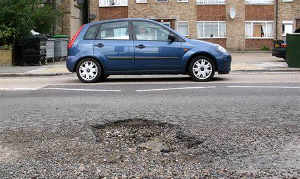Report Recounts Changing Nature Of Greater Boston Immigration
FEB. 14, 2024…..Immigrants have been steadily representing a larger share of the Boston area’s population for more than half a century, but where they come from and where they settle has been changing significantly in recent years, according to new analysis.
In an extensive, 50-page report that examined the significant economic impact immigrants have on the region, researchers found that South American and Asian countries are now the most common places of origin for the foreign-born population across Greater Boston’s dozens of communities.
The change is a relatively recent development, authors of the Boston Indicators and Immigration Research Initiative report said. In 1990, the most common country of origin for the region’s foreign-born population was Canada, and six of the top 10 countries were in Europe.
By 2021, neither Canada nor a single European country cracked the top 10, which by that point was led by China, the Dominican Republic and India.
“That’s a pretty significant shift over the course of just three decades,” said Kelly Harrington, a senior research manager at Boston Indicators and one of the report’s authors.
Researchers found the immigrant population in Greater Boston also has a different makeup than the country as a whole, reflecting “a more diverse global spread.”
Nearly one in four foreign-born residents in the United States come from Mexico, but only one in 100 of greater Boston’s immigrants were born in Mexico, according to the report’s analysis of U.S. Census Bureau data.
A majority of all Cape Verdean immigrants in the United States live in Greater Boston, which is also home to substantial populations hailing from Portugal, Cambodia and other countries, the report found. The region has a higher share of immigrants from China (9.9 percent, compared to 4.9 percent nationally), the Dominican Republic (9.4 percent in Greater Boston, 2.7 percent nationally), Brazil (6.7 percent in Greater Boston, 1.1 percent nationally) and Haiti (5.9 percent in Greater Boston, 1.5 percent nationally).
Where immigrants settle is changing, too.
Some communities further away from the urban core experienced significant growth from 2011 to 2021 in the foreign-born share of their populations, like Revere (11 percentage point increase), Boxborough (9 percentage point increase), Marlborough (8 percentage point increase) and Brockton (8 percentage point increase), according to the report.
Over the same span, the share of Boston’s population that was born in another country grew just a single percentage point, Cambridge’s share grew 2 percentage points and Somerville’s dropped by 2 percentage points.
“Greater Boston’s foreign-born population is still largely concentrated in Boston and inner-ring suburbs like Cambridge, Somerville, and Chelsea. But this is changing quickly,” authors wrote. “Boston itself was once the hub for new immigrant arrivals to the region, but as housing costs have skyrocketed, many immigrant families are being pushed to move to farther-flung parts [of] the region and many new arrivals are skipping the urban core altogether.”
Although immigrants have been steadily representing a larger share of the city of Boston’s population for decades — and a surge in migration over the last year has put the state’s emergency shelter system under enormous strain — researchers suggested the record for immigration dates back to before the Civil War.
In 1850, which the report said is the earliest year with Census data available for place of birth, immigrants represented 38 percent of Boston’s residents. That percentage dropped in the ensuing years as a result of a series of laws and policies designed to curb immigration, like the 1882 Chinese Exclusion Act, or to impose specific quotas on countries of origin.
Boston’s foreign-born population share reached a low of 13 percent in 1960, and since then has been climbing, reaching 29 percent in 2021.
Researchers dove into a range of economic factors, too, writing that immigrants contribute about $103 billion in impact each year, or 21 percent of the regional GDP, mirroring the foreign-born share of the population.
Pushing against a stereotype that immigrants work primarily in low-wage jobs, authors said about six in 10 foreign-born residents in Greater Boston work middle- or upper-wage jobs. Immigrants are also more likely to start businesses, representing 28 percent of all business owners and owning 40 percent of “Main Street businesses.”
“This shows us really what is most important to bear in mind here: not only are immigrants an integral part of the economy, but they’re also central to keeping afloat the businesses that we rely on every single day,” said Anthony Capote, a senior data and policy analyst with the Immigration Research Initiative and another of the report’s authors.





